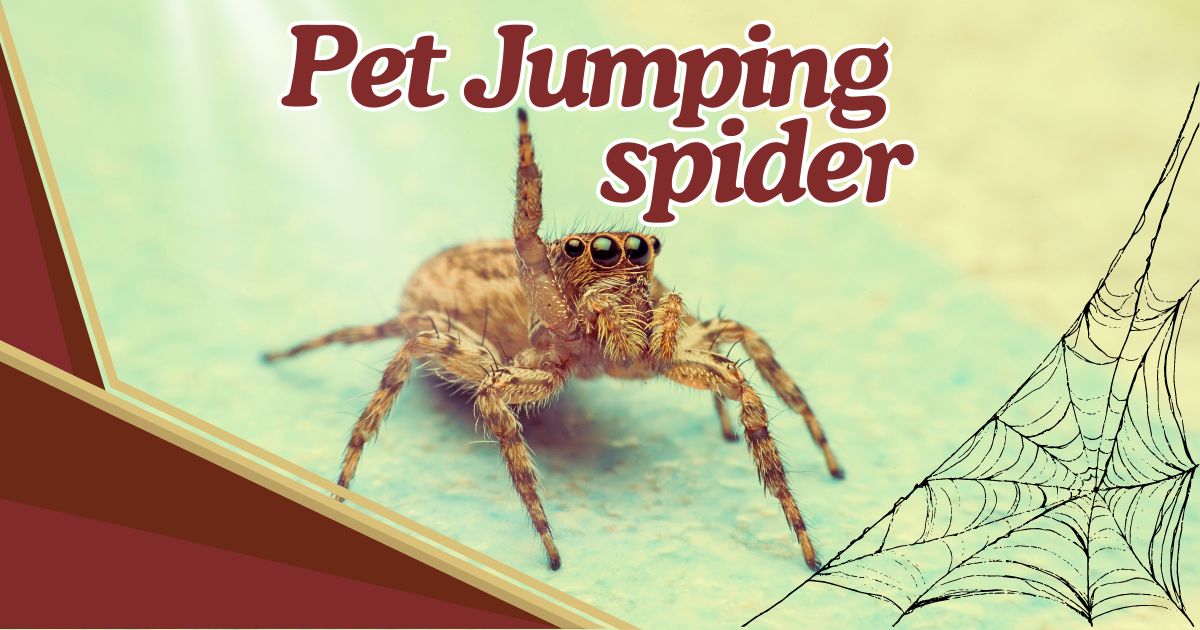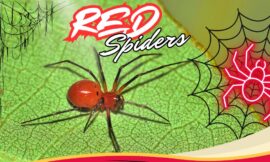The idea of keeping a pet jumping spider might seem unusual at first, but these small, active arachnids make surprisingly delightful pets. Known for their agility, intelligence, and curious nature, jumping spiders have won the hearts of many pet owners who appreciate their low-maintenance care requirements and fascinating behaviors. Unlike more common pets, jumping spiders offer a unique experience that is both rewarding and educational.
In this blog post, we’ll explore the top 5 reasons why a pet jumping spider makes a great companion, as well as how to care for one, from setting up the perfect enclosure to feeding and handling tips.
1. What Is a Pet Jumping Spider? [Keyword-Rich Subheading]
A pet jumping spider is a small, agile arachnid belonging to the Salticidae family, known for its remarkable ability to jump great distances relative to its size. Unlike other spiders that rely on webs to catch prey, jumping spiders are active hunters, using their keen eyesight and jumping ability to capture insects.
With their large, forward-facing eyes and inquisitive nature, jumping spiders are often considered more charismatic and interactive than other spider species. They can recognize their owners, learn to associate humans with food, and even respond to gentle handling. Popular species for pets include the bold jumping spider (Phidippus audax) and the regal jumping spider (Phidippus regius), both of which are known for their relatively easy care and friendly demeanor.
Whether you’re new to arachnids or an experienced pet owner looking for a unique addition, jumping spiders make excellent, low-maintenance companions.
2. Top 5 Reasons to Keep a Jumping Spider as a Pet [Power Subheading]
If you’re wondering why you should consider a jumping spider as a pet, here are the top 5 reasons they make an excellent addition to your home:
1. Low Maintenance
- One of the biggest advantages of owning a pet jumping spider is that they are incredibly low-maintenance. Unlike dogs or cats, they don’t require daily walks, grooming, or expensive food. They thrive on a simple diet of insects and need a small, manageable enclosure that doesn’t require constant cleaning.
2. Fascinating Behavior
- Jumping spiders are known for their interactive and curious behavior. They explore their surroundings, watch what’s happening around them, and can even seem to recognize their owners. Their hunting tactics and ability to leap are mesmerizing to watch, providing hours of entertainment.
3. Small Space Requirement
- If you live in a small apartment or simply don’t have the space for larger pets, a jumping spider is the perfect choice. They only need a small enclosure, which makes them an ideal pet for people who want an interesting animal without taking up much room.
4. Inexpensive Care
- Jumping spiders are budget-friendly pets. Their food, mainly small insects like fruit flies or crickets, is inexpensive, and their enclosures can be simple and affordable to set up. Overall, they require minimal investment compared to other pets.
5. Unique and Educational
- Keeping a pet jumping spider is a unique experience that can also be educational. Learning about their habits, diet, and behaviors can be a fascinating journey, especially for children or anyone interested in learning more about arachnids and biology.
These qualities make jumping spiders a fantastic pet for anyone looking for something different, exciting, and easy to care for.
3. How to Set Up the Perfect Enclosure for Your Pet Jumping Spider
Setting up a comfortable and safe enclosure for your pet jumping spider is key to ensuring its health and happiness. Here’s a step-by-step guide on creating the perfect habitat:
1. Choosing the Right Container
- A small terrarium or plastic container works well for a jumping spider. The enclosure should be at least 8x8x12 inches to give the spider enough room to jump and explore. Make sure the enclosure has good ventilation to prevent mold growth and maintain air quality.
2. Substrate
- Use a thin layer of coconut fiber, sphagnum moss, or soil as a substrate. This not only helps maintain humidity but also provides a natural environment for the spider to explore.
3. Decoration
- Add natural elements like small branches, leaves, and rocks to give the spider places to hide, climb, and perch. Jumping spiders enjoy exploring their environment, so having vertical and horizontal surfaces is important.
4. Humidity and Temperature
- Jumping spiders prefer moderate humidity levels, so lightly mist the enclosure every few days to maintain proper moisture. Keep the enclosure at room temperature (70-80°F). There’s no need for a heat lamp unless the room is particularly cold.
5. Lighting
- While jumping spiders don’t need special lighting, placing the enclosure near a window for natural light will help mimic their natural environment. Just make sure they aren’t in direct sunlight, as this can overheat the enclosure.
With this setup, your pet jumping spider will have a comfortable, enriching habitat that allows it to thrive.
4. Feeding Your Pet Jumping Spider: What You Need to Know
Pet jumping spiders are active hunters, and their diet consists mainly of small, live insects. Here’s what you need to know to keep your spider well-fed and healthy:
1. Types of Food
- Jumping spiders eat a variety of small insects, including fruit flies, crickets, and mealworms. It’s important to feed them live prey to stimulate their natural hunting instincts. Avoid feeding your spider wild-caught insects, as these can carry parasites or pesticides.
2. How Often to Feed
- Young spiders (spiderlings) need to eat more frequently, typically once every 1-2 days. Adult spiders can be fed 2-3 times a week. Offer food in moderation—jumping spiders don’t need large quantities of food to thrive.
3. Hydration
- Jumping spiders get most of their moisture from their prey, but you can also mist their enclosure lightly to provide extra hydration. Never provide a water dish, as spiders can drown in even a small amount of water.
By feeding your pet jumping spider the right food and maintaining a proper feeding schedule, you’ll ensure that it stays healthy and active.
5. How to Handle and Bond with Your Pet Jumping Spider
Handling a pet jumping spider can be a rewarding experience, but it’s important to do it carefully to avoid stressing or harming the spider. Here are some tips on how to handle your spider and build trust:
1. Let the Spider Approach You
- Jumping spiders are naturally curious, so instead of trying to grab them, place your hand in the enclosure and let the spider come to you. They may climb onto your hand if they feel comfortable.
2. Be Gentle
- If you do pick up your spider, make sure to do so gently and with steady hands. Jumping spiders are delicate, and rough handling can cause injury. Use slow, smooth movements to avoid startling the spider.
3. Short Handling Sessions
- Keep handling sessions brief, especially at first, to avoid overstressing your spider. Gradually increase the duration as the spider becomes more comfortable with you.
4. Watch for Signs of Stress
- If your spider starts retreating, jumping away, or curling up, it may be stressed. In this case, gently return it to its enclosure and try again another day.
By handling your pet jumping spider with care and patience, you can build a bond with it and enjoy the experience of interacting with your tiny companion.
6. Common Types of Jumping Spiders for Pets
Not all jumping spider species are suitable as pets, but there are several popular types that are commonly kept in captivity. Here are a few of the most popular species for pet owners:
1. Phidippus audax (Bold Jumping Spider)
- Known for its bold personality and striking black and white appearance, the bold jumping spider is one of the most common species kept as pets. They are easy to care for and very interactive with their owners.
2. Phidippus regius (Regal Jumping Spider)
- The regal jumping spider is another favorite, thanks to its larger size and beautiful color variations. They are often more calm and docile than other species, making them great for beginners.
3. Salticus scenicus (Zebra Jumping Spider)
- The zebra jumping spider is a smaller species with distinct black and white stripes. They are fast and energetic, making them fascinating to watch as they hunt and explore their enclosure.
Each species has its own personality and care requirements, but all are easy to care for and make great pets for spider enthusiasts.
7. Where to Buy a Pet Jumping Spider: Finding the Right Source
If you’re ready to add a pet jumping spider to your family, it’s important to find a reputable source. Here’s where you can buy a healthy, captive-bred spider:
1. Online Breeders
- Many breeders specialize in jumping spiders and sell them online. These breeders usually offer a variety of species and provide information on the care of the spider you’re purchasing. Make sure to choose a breeder with good reviews and a history of healthy spiders.
2. Local Exotic Pet Stores
- Some exotic pet stores carry jumping spiders, especially if they specialize in reptiles or arachnids. Ask about the spider’s history, age, and care requirements before making a purchase.
3. Spider Enthusiast Communities
- Online forums and communities of arachnid enthusiasts often have members who breed and sell jumping spiders. Joining these communities can be a great way to find reliable sellers and get advice from experienced spider owners.
By purchasing your pet jumping spider from a reputable source, you can ensure that you’re getting a healthy spider that will thrive in its new home.
For more exciting blogs, visit our homepage Magzineco.
Conclusion: Why a Pet Jumping Spider Is the Perfect Low-Maintenance Companion
If you’re looking for a low-maintenance, unique, and fascinating pet, a pet jumping spider is an excellent choice. From their interactive personalities to their minimal care requirements, jumping spiders offer a rewarding pet experience that’s unlike any other. Whether you’re fascinated by their hunting skills or intrigued by their ability to bond with their owners, these tiny creatures are sure to capture your heart.
With the right care, enclosure, and handling, your pet jumping spider will thrive, providing endless fascination and enjoyment in your home.
FAQs About Pet Jumping Spiders
- What do pet jumping spiders eat?
- Pet jumping spiders primarily eat small live insects such as fruit flies, crickets, and mealworms.
- How often should I feed my pet jumping spider?
- Feed young spiders every 1-2 days and adult spiders 2-3 times per week.
- What size enclosure do jumping spiders need?
- Jumping spiders need a small enclosure of about 8x8x12 inches with good ventilation and places to climb.
- Are jumping spiders easy to handle?
- Yes, with patience and care, jumping spiders can be handled, but be gentle and avoid rough handling.
- What species of jumping spider is best for beginners?
- The bold jumping spider (Phidippus audax) and the regal jumping spider (Phidippus regius) are great choices for beginners.
- Where can I buy a pet jumping spider?
- You can buy a jumping spider from online breeders, exotic pet stores, or spider enthusiast communities.
- How long do pet jumping spiders live?
- Pet jumping spiders typically live for 1-2 years, depending on the species and care.
- Do jumping spiders need a water dish?
- No, jumping spiders get their moisture from prey, and you can mist their enclosure for extra hydration.
- How do I handle a pet jumping spider?
- Let the spider approach you and handle it gently, keeping handling sessions short to avoid stress.
- Can jumping spiders recognize their owners?
- Yes, jumping spiders have excellent eyesight and can learn to recognize their owners, making them interactive pets.




